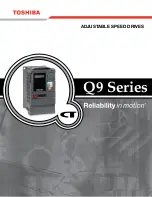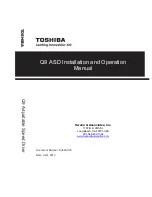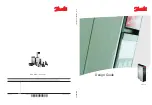
8
OPERATING INSTRUCTIONS
To reduce the risk of fire, personal injury, and
product damage due to a short circuit, never
immerse your tool, battery pack or charger in
fluid or allow a fluid to flow inside them.
Corrosive or conductive fluids, such as
seawater, certain industrial chemicals, and
bleach or bleach-containing products, etc. can
cause a short circuit
.
If any parts are damaged or missing, do not
operate this product until the parts are
replaced. Use of this product with damaged or
missing parts could result in serious personal
injury.
Do not attempt to modify this tool or create
accessories not recommended for use with this
tool. Any such alteration or modification is
misuse and could result in a hazardous
condition leading to possible serious injury.
To prevent accidental starting that could cause
serious personal injury, always remove the
battery pack from the tool when assembling
parts, making adjustments, or cleaning the
tool.
This cordless tool must be used only with the
battery packs and charger listed below:
MOKENEYE
Battery Pack
1.3Ah
B121303MZ
1.5Ah
B121505MZ
2.0Ah
B122010MZ
MOKENEYE
Charger
500mA
C05MZ1US
1A
C10MZ1US
2A
C20S1US
NOTICE: Please refer to the battery and charger
manuals for detailed operating information.
TO ATTACH/DETACH BATTERY PACK
Lock the variable-speed trigger switch “OFF” by
placing the direction-of-rotation (forward / center-
lock / reverse) selector in the center position before
attaching or detaching the battery pack.
To attach the battery pack
See Fig. 2a
To insert the battery, slide the pack into the body
of the tool. Make sure it latches securely into
place.
To detach the battery pack
See Fig. 2b
To remove the battery, push in the release buttons
on both sides of the battery and pull the battery
pack away from the tool.
Battery tools are always in
operating condition. Therefore,
the direction-of-rotation (forward/center-
lock/reverse) selector should always be locked in
the center position when the tool is not in use.
DIRECTION-OF-ROTATION
(FORWARD/CENTER-LOCK/REVERSE)
SELECTOR
See Fig. 3
After tool use, lock the direction-
of-rotation selector in the “OFF”
position (center-lock) to help prevent accidental
starts and possible injury.
Your tool is equipped with a direction-of-rotation
selector, located above the variable-speed trigger
switch. This selector is designed to change the
direction of rotation of the bit and to lock the
variable-speed trigger switch in the “OFF” (center-
lock) position.
a.
Position the direction-of-rotation selector to the
far right of the tool for forward rotation.
b.
Position the direction-of-rotation selector to the
far left of the tool for reverse rotation.
c.
Position the switch in the “OFF” (center-lock)
position helps reduce the possibility of
accidental starting when not in use.
NOTICE: To prevent gear damage, always allow the
drill / driver to come to a complete stop before
changing the direction of rotation.
NOTICE: The drill / driver will not run unless the
direction-of-rotation selector is engaged fully to the
left or right.
VARIABLE-SPEED TRIGGER SWITCH
See Fig. 4
Your tool is equipped with a variable-speed trigger
switch. The tool can be turned “ON” or “OFF” by
depressing or releasing the trigger.
The variable-speed trigger switch delivers higher
speed with increased trigger pressure and lower
speed with decreased trigger pressure.
TWO-SPEED GEARBOX SWITCH
See Fig. 5
Your tool is equipped with a two-speed gearbox
designed for drilling or driving at LO (1) or HI (2)
speeds. A slide switch is located on the top of the
drill to select either LO (1) or HI (2) speed (Fig.5).
LO (1) speed provides high-torque and slower
drilling speeds for heavy-duty work or for driving
screws. Use LO (1) speed for starting holes without
a center punch, drilling metals or plastic, drilling
ceramics, or in applications requiring a higher
torque.
HI (2) speed provides faster speeds for drilling
lighter work. HI (2) speed is better for drilling
wood and wood composites and for using abrasive
and polishing accessories.
NOTICE: To prevent gear damage, always allow
the drill / driver to come to a complete stop before
changing between high speed and low speed.





























